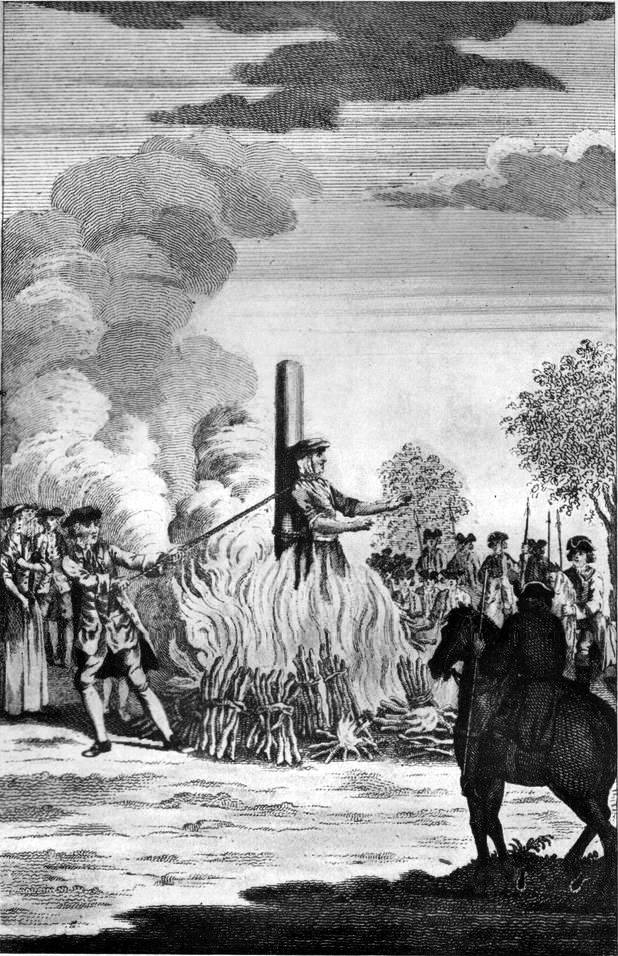Catherine Hayes née Hall (1690–1726), was the last woman in England to be executed by being burned alive. She had been convicted of petty treason for the murder of her husband on 1 March 1726, when with the help of two male accomplices she had beaten him to death.[1]
William Makepeace Thackeray wrote a fictionalised account of Catherine’s life in Catherine: A Story, serialised in 1839–1840 in Fraser’s Magazine, as a parody of the Newgate novelsEarly form of sensation literature, drawing its inspiration from the Newgate Calendar, first published in 1773 and containing biographies of famous criminals..[2]
Catherine was not the last woman to be sentenced to execution by burning. Catherine MurphyThe last woman in England to have been sentenced to be burnt at the stake. received the same sentence in 1789, but she was ordered to be strangled before the fire was lit.
See also
- Burning of women in EnglandBurning was a legal punishment imposed on women found guilty of high treason, petty treason or heresy. Over a period of several centuries, female convicts were publicly burnt at the stake, sometimes alive, for a range of activities including coining and mariticide.

